Joanna Piotrowska: Unseeing Eyes, Restless Bodies
Contemporary Art University of Pennsylvania
118 S 36th St.
Philadelphia
Oct. 24, 2024
Read the provided booklet: “Think of a person whose presence gives you a sense of strength, empowerment and calm.” Silent space on the page. Maybe space for words. “Imagine embracing them. What shape does your body make?” Space for a scribble, pencil provided.
Closing the little pink booklet for now, my head is swimmy from caffeine. On a sunny afternoon I’ve used my new electric wheelchair to travel from my West Philly home, just east, to the Institute for Contemporary Art. This is where I’ll be seeing the exhibit “Unseeing Eyes, Restless Bodies” by Joanna Piotrowska. I’m entering the show knowing the photographs will be thematically surrounding touch and confinement. I am, as always, interested in the access points present and absent from the show. In “unseeing,” what will be present extra-visually? In the theme of touch, what will be untouchable to Disabled bodyminds?
Feeling my body is not still enough to engage with these photographs. Everything looks like black and white, blurry soft touch from my vantage point. My body feels cracked, but my wheels are smooth against the polished concrete.
The first image reaches for the skin besides someone’s nose (the someone is unidentified, the photo cuts the face right above the sinus, below the eyes.) The caffeine clears, soft touch has my full attention.
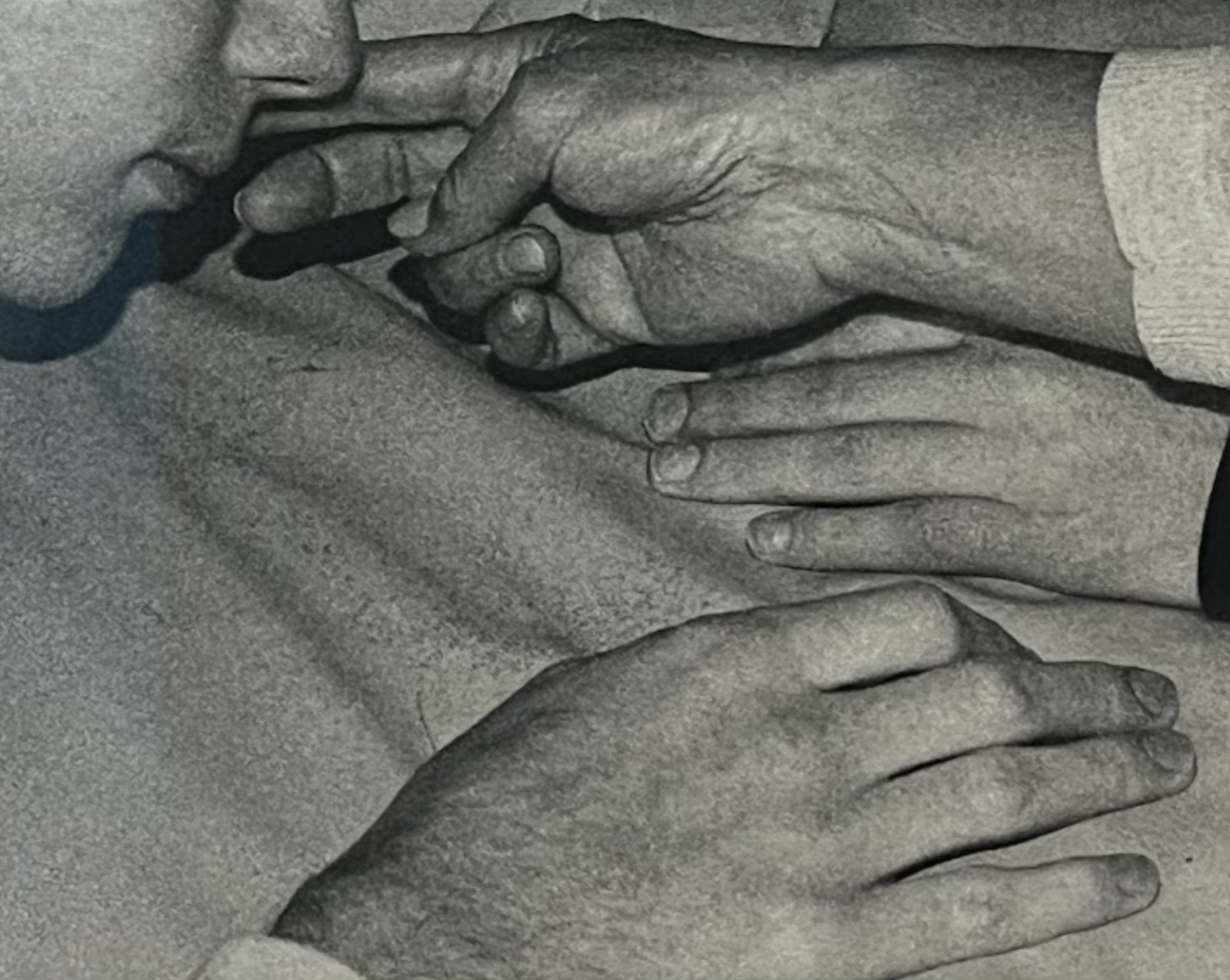
The walls of this exhibit create plain, white hallways with one or two photographs per wall. The hallways create an outer circle to an inner space, which enters to a large, notable bright room, fully carpeted in lush dusty pink shag.
The photograph in front of me tells me to focus. If I were able to stand, I might feel too tall to view these photographs. Did Joanna know I might come in my chair? Warm, wooden frames around black and white images.
The subject is often unaware of the camera. The subject wrestles or embraces, facing away from the camera. I am lost in photo after photo of touch or struggle or shelter. I am lost and there is also a deep voice coming from the theater room where the film plays. “So there’s touch in touch” is all I can pick up. This does not make sense to me, so I am hoping there are subtitles.
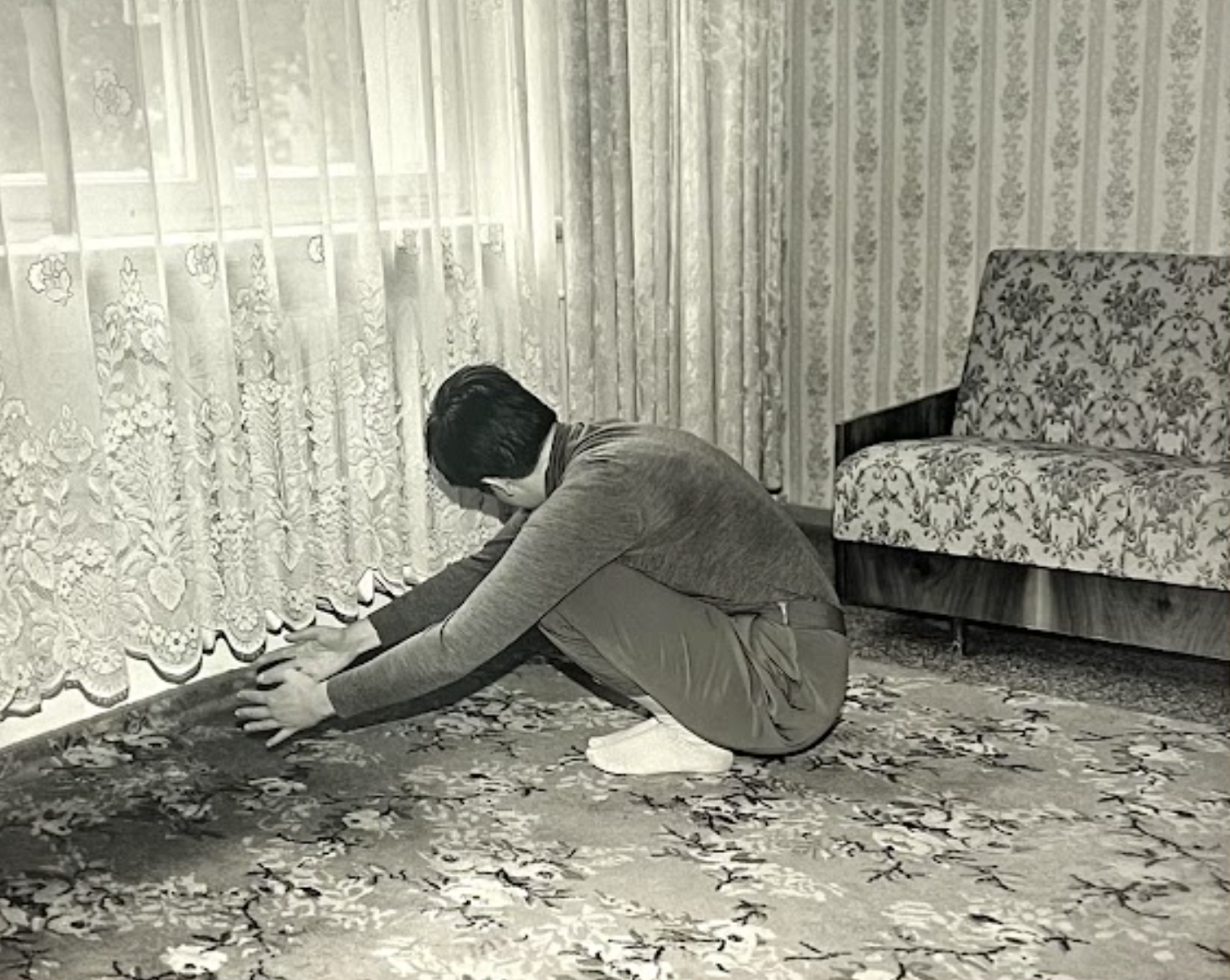
I feel uneasy, and so does the boy in the photograph. He looks sick, on the edge of consciousness. He lays out on a chaise lounge, his face blank, while his twin brother holds onto his hand with an intensity I am familiar with when I am slipping unconscious. These are white men set in a eerily perfect suburban living room. There is a disembodied hand coming towards the sick boy from out of frame, I feel it’s his mother’s hand. In this photograph I am reminded again that Joanna comes from a Polish background, the photographs all have in common a very Slavic sense of space, as well as decor in the living room sets.
In smaller frames are images of confines. A fort, made from tablecloths or sheets, another from a baby’s highchair fit with a metal fan.
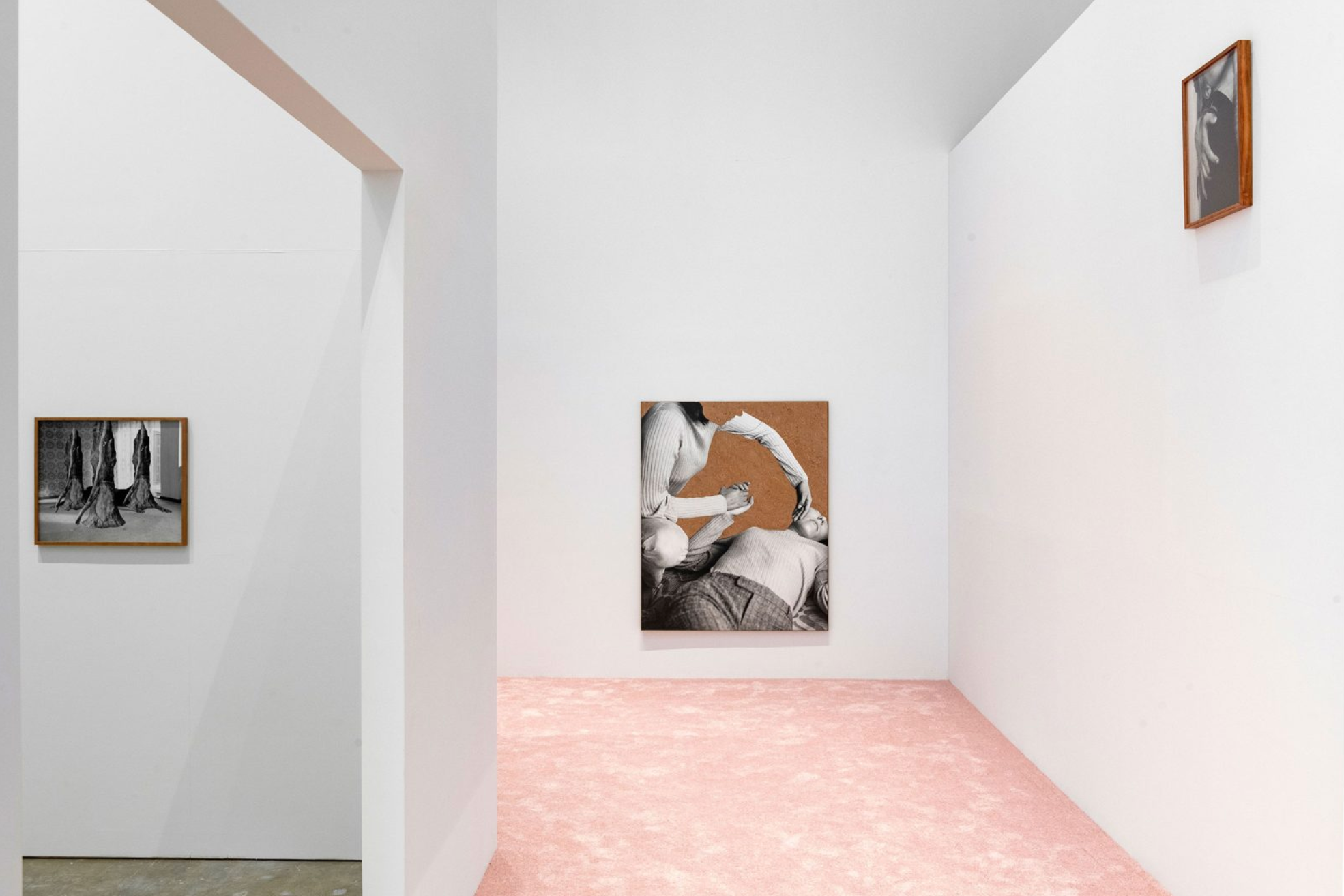
A glimpse of pink carpeting, then into the big, dark theater. Videos of sheep and human hands and breasts, a loud voice suggesting sight, sound, taste and smell are not necessarily reciprocal, while touch– touch you cannot accomplish without being touched in return.
My body has started to cry. Touch is difficult.
Finding, in my seat, that leaving the theater I can’t wait to get to the room with pink carpeting. I feel confined in my heart, reminded of my disabled confinements of years past. Reminded of the day centers and schools I have worked in that acted as confinement for hundreds of disabled children and adults. I decide to speed up.
Maybe you are not meant to move through this exhibit so slowly. Maybe the reminder is too close. I can barely look at the images of restless bodies, which hang their heads and let their shoulders drop, hair covering face. These photographs sit directly outside of the theater. These are black and white flash images of women with long hair, their bodies are limp. Their heads are hanging down, arms are weighted by gravity uncomfortably slipping from shoulder sockets. They are limp, why do I feel they are restless? I often look this way.
In the pink carpeted room, a large black and white and brown photograph collage doesn’t speak to me until I move closer and realize there are perfectly cut chunks of wood filling empty space between a softened, slightly blurred photograph of two people holding hands.
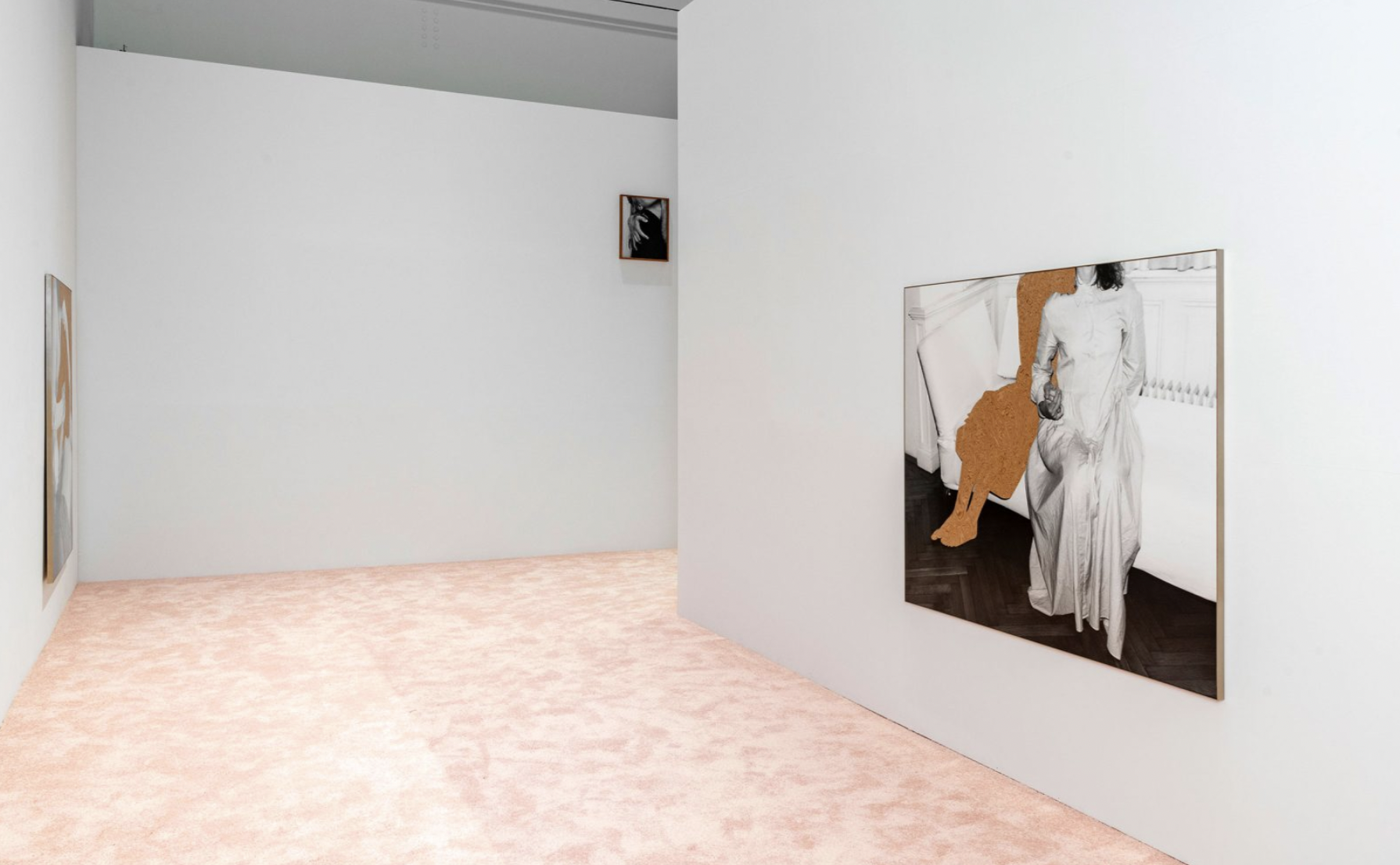
I want to reach out and run my hand along the grain of the wood, touch the seam between the photograph and the wood.
The carpeting makes it harder to move my wheelchair. The texture is thick rather than the smooth of the concrete.
I want to get out and crawl. Rub my face on the soft carpet till it’s pink.
The little booklet instructs me on its final page “Draw the safest shape you can imagine.”
I draw a crescent. Curving body.
Safe to go, safe to stay.
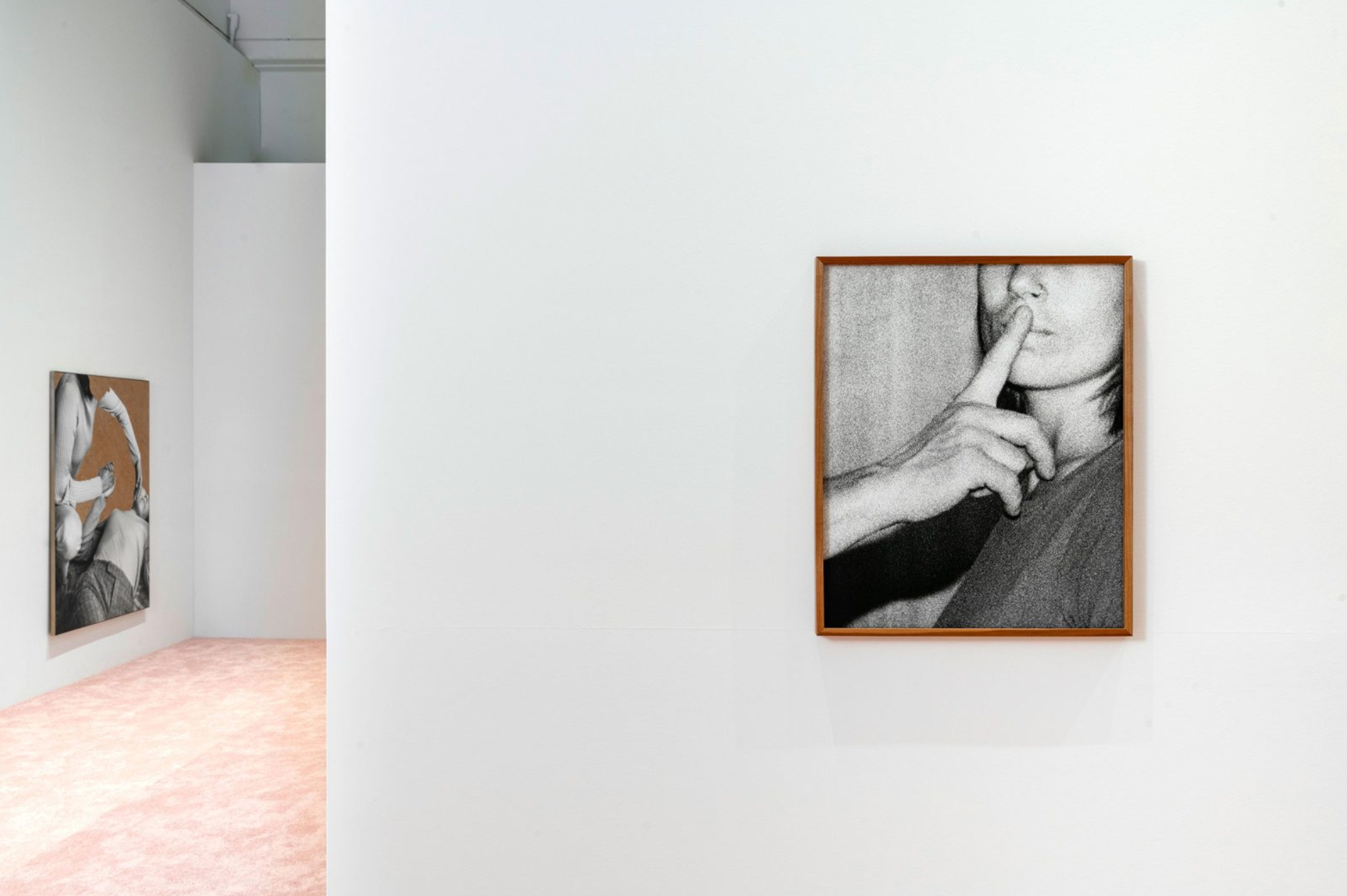
"Unseeing Eyes, Restless Bodies" is showing through Dec. 1.






